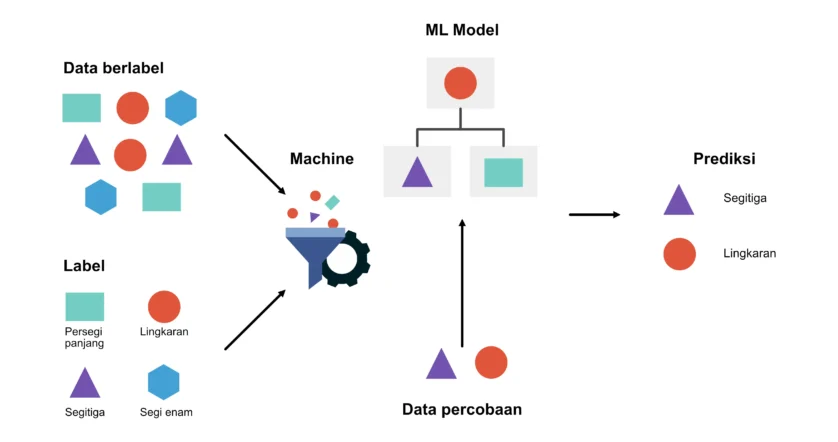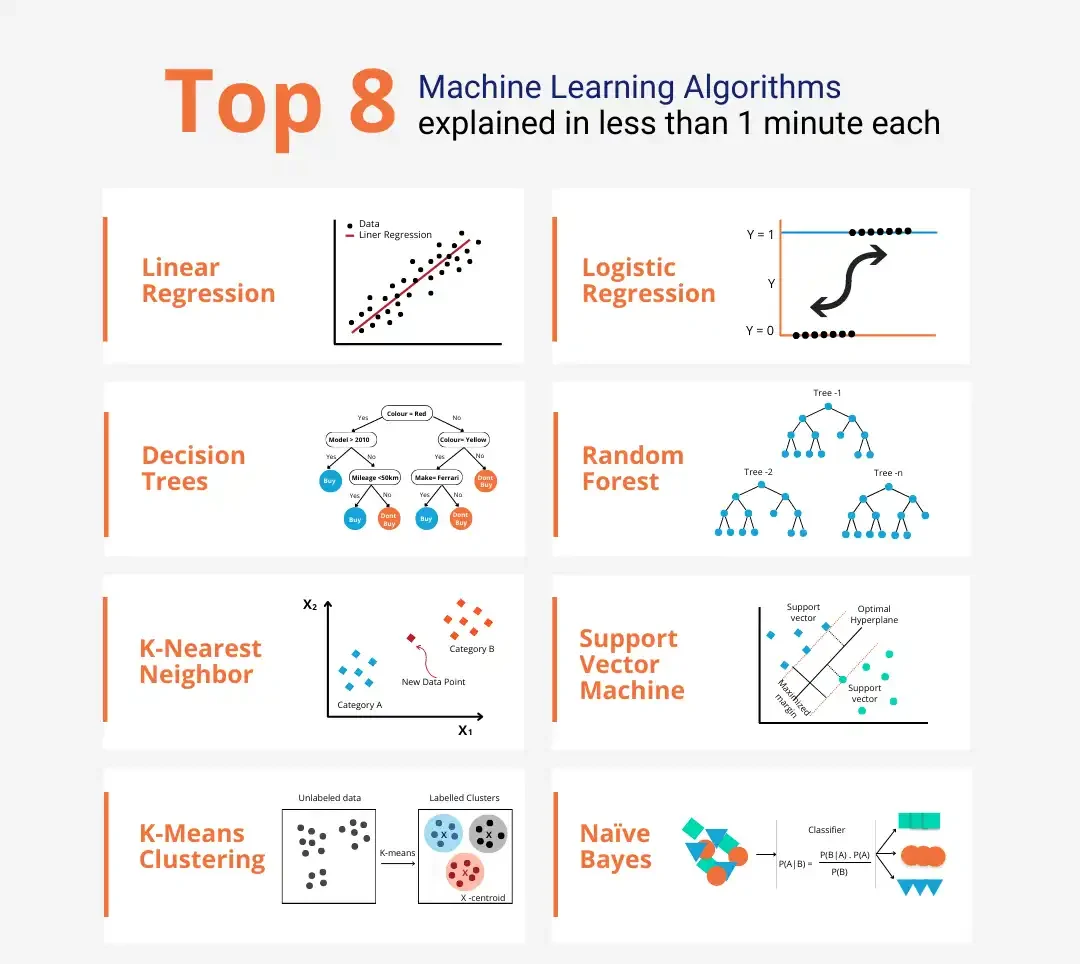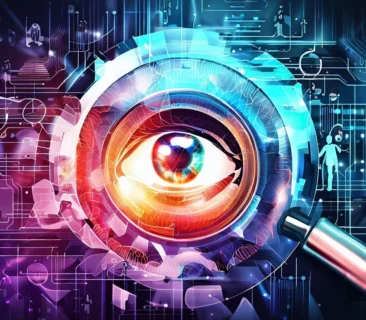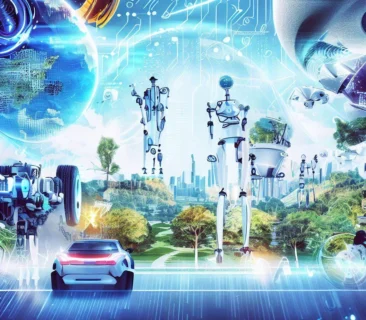
What is Machine Learning ?
Machine learning is a branch of artificial intelligence (AI) that gives machines the ability to learn without being explicitly programmed. Machines learn by analyzing data and finding patterns that can be used to make predictions or decisions.
Why Machine Learning Is Important

Machine learning is important because it has many benefits, including:
- Helping us understand the world around us.
- Providing solutions to complex problems.
- Automating repetitive and time-consuming tasks.
- Making our lives more convenient and easy.
Machine learning can be used to analyze complex data and find patterns that we cannot see with the naked eye. This can help us to better understand the world around us and make better decisions.
Machine learning can be used to solve a variety of problems, such as predicting the weather, diagnosing diseases, and developing new products.
Machine learning can be used to automate repetitive and time-consuming tasks, so that we can focus on more important things.
Machine learning is used in a variety of products and services that we use every day, such as search engines, product recommendations, and virtual assistants. This makes our lives more convenient and easy.
Machine Learning Applications

Machine learning is used in almost every industry, including:
- Healthcare: Machine learning is used to develop new drugs, diagnose diseases earlier, and recommend the right treatment for patients. For example, machine learning is used to develop algorithms that can detect cancer in medical images with higher accuracy than humans.
- Finance: Machine learning is used to detect fraud, predict the stock market, and provide investment advice. For example, machine learning is used to develop systems that can detect suspicious credit card transactions in real time.
- Retail: Machine learning is used to recommend products to customers, predict demand, and optimize supply chains. For example, machine learning is used to develop systems that can recommend products to customers based on their purchase history.
- Manufacturing: Machine learning is used to control quality, automate tasks, and predict maintenance needs. For example, machine learning is used to develop systems that can automatically detect defects in products.
- Transportation: Machine learning is used to develop self-driving cars, optimize public transportation routes, and predict traffic congestion. For example, machine learning is used to develop systems that can help self-driving cars navigate the road safely.
In addition to the industries mentioned above, machine learning is also often used by many AI tools to perform certain tasks. Here are some examples of its applications:
- Product recommendations: AI tools such as Google Play and Amazon Recommendations use machine learning to recommend products to users based on their purchase history, interests, and other factors.
- Web search: AI tools such as Google Search and Bing use machine learning to understand user intent and provide relevant search results.
- Fraud detection: AI tools such as PayPal Fraud Detection and Stripe Radar use machine learning to detect fraudulent transactions.
- Facial recognition: AI tools such as Facebook Photos and Apple Face ID use machine learning to recognize people’s faces in images or videos.
- Language translation: AI tools such as Google Translate and Bing Translate use machine learning to translate languages with high accuracy.
- Sentiment analysis: AI tools such as Amazon Comprehend and Google Cloud Natural Language use machine learning to analyze the sentiment of text, such as customer reviews or social media posts.
- Spam detection: AI tools such as Gmail Spam Filter and Akismet use machine learning to detect spam emails.
Machine Learning VS Deep Learning

Machine learning and deep learning are two branches of artificial intelligence (AI) that give machines the ability to learn without being explicitly programmed. However, there are some key differences between the two.
Machine learning is a more general approach that can encompass a variety of methods. It includes the creation of statistical models that can be used to predict or make decisions based on given data. Examples of machine learning include linear regression, logistic classification, and decision trees.
Deep learning is a subfield of machine learning that uses artificial neural networks (ANNs) to process data. ANNs are computational models inspired by the structure and function of the human brain. They are made up of layers of interconnected artificial neurons. Artificial neurons can learn patterns in data and make predictions or decisions based on those patterns.
Deep learning is better at handling complex, unstructured data, such as images, videos, and text. It can also learn from much larger datasets than traditional machine learning.
The following table summarizes the key differences between machine learning and deep learning:
| Characteristic | Machine learning | Deep learning |
|---|---|---|
| Definition | A branch of AI that gives machines the ability to learn without being explicitly programmed. | A subfield of machine learning that uses ANNs to process data. |
| Methods | A variety of methods, including linear regression, logistic classification, and decision trees. | ANNs. |
| Data | Can handle both structured and unstructured data, but is better at structured data. | Better at handling complex, unstructured data, such as images, videos, and text. |
| Amount of data | Can learn from small to large datasets. | Can learn from very large datasets. |
Machine Learning Models

Machine learning can be broadly divided into three types:
Supervised learning
In supervised learning, machines learn from data that has been labeled. Labels are information that indicate the category or class of the data. For example, email data that has been labeled spam or not spam. Machines learn from this labeled data to create a model that can predict the label of new, unlabeled data.
Examples of supervised learning applications:
- Classifying spam or not spam email
- Classifying images of cats or dogs
- Predicting house prices
- Detecting credit card fraud
Unsupervised learning
In unsupervised learning, machines learn from data that has not been labeled. Machines try to find patterns and structure in the data without being told what to look for.
Examples of unsupervised learning applications:
- Clustering customers based on their purchasing behavior
- Detecting anomalies in sensor data
- Recommending products
Reinforcement learning
In reinforcement learning, machines learn from their own experience. Machines are rewarded if they successfully complete a task and punished if they fail. Machines try to maximize the rewards they receive.
Examples of reinforcement learning applications:
- Developing self-driving cars
- Training robots to perform certain tasks
- Developing stock trading algorithms
In addition to the three types of machine learning listed above, there are several other, more specific types of machine learning, such as:
Semi-supervised learning
Semi-supervised learning is a combination of supervised learning and unsupervised learning. In semi-supervised learning, machines learn from mixed data, which is data that has been labeled and unlabeled.
Transfer learning
Transfer learning is a machine learning technique in which a model that has been trained for one task is used to solve another task. For example, a model that has been trained to recognize images of cats and dogs can be used to recognize images of other animals, such as horses and cows.
Meta learning
Meta learning is a machine learning technique in which machines learn how to learn. In meta learning, machines are given several different machine learning tasks and learn how to complete those tasks in an efficient way.
How Does Machine Learning Work ?

Machine learning is a type of artificial intelligence (AI) that allows computers to learn without being explicitly programmed. Machines learn by analyzing data and identifying patterns. These patterns can then be used to make predictions or decisions.
The machine learning process can be broken down into five steps:
- Collect data.
- Choose a machine learning algorithm.
- Train the model.
- Evaluate the model.
- Deploy the model.
The first step is to collect the data that will be used to train the model. This data can be either labeled or unlabeled. Labeled data is data that has been given information about its category or class. For example, email data that has been labeled spam or not spam. Unlabeled data is data that has not been given information about its category or class.
There are many different machine learning algorithms, each with its own strengths and weaknesses. The machine learning algorithm that is chosen will depend on the type of data that is collected and the task that is being performed.
Once the machine learning algorithm has been chosen, the model needs to be trained on the data that has been collected. During the training process, the model will learn the patterns in the data.
Once the model has been trained, it needs to be evaluated to see how well it can predict or make decisions on new data.
Once the model has been evaluated and deemed to be accurate enough, it can be used to make predictions or decisions on new data.
Machine Learning Algorithms

There are many different machine learning algorithms, each with its own strengths and weaknesses. Some of the most commonly used machine learning algorithms include:
- Linear regression
- Logistic regression
- Decision trees
- Support vector machines (SVMs)
- K-nearest neighbors (KNN)
- Clustering
- Anomaly detection
Linear regression is a supervised learning algorithm that is used to predict continuous values. For example, linear regression can be used to predict the price of a house based on the size of the house, the number of bedrooms, and the number of bathrooms.
Logistic regression is a supervised learning algorithm that is used to predict binary values. For example, logistic regression can be used to predict whether an email is spam or not spam, whether an image is a cat or a dog, or whether a product is a necessity or a luxury.
Decision trees are supervised learning algorithms that are used to predict categorical values. Decision trees work by dividing the data into different branches based on the values of certain features. For example, a decision tree can be used to predict whether someone will purchase a certain product based on their age, gender, and income.
SVMs are supervised learning algorithms that can be used for both classification and regression. SVMs work by finding a hyperplane that separates the data into two different classes.
KNN is a supervised learning algorithm that is used for classification. KNN works by finding the K nearest data points to a new data point and predicting the class of the new data point based on the classes of the K nearest data points.
Clustering is an unsupervised learning algorithm that is used to group unlabeled data into different groups. Clustering works by finding patterns and structures in the data.
Anomaly detection is an unsupervised learning algorithm that is used to detect unusual or anomalous data. Anomaly detection works by finding patterns and structures in the data and identifying data that deviates from those patterns and structures.
The choice of the right machine learning algorithm will depend on the type of data that is collected and the task that is being performed. For example, linear regression would be a good choice for predicting continuous values, such as the price of a house. Logistic regression would be a good choice for predicting binary values, such as whether an email is spam or not spam. Decision trees would be a good choice for predicting categorical values, such as whether someone will purchase a certain product.
Machine Learning Limitations

Machine learning is a powerful and versatile technology, but it also has some limitations and drawbacks. Here are some of the limitations and drawbacks of machine learning:
- Data requirements: Machine learning requires large amounts of data to learn and make accurate predictions. If the available data is not large enough or of poor quality, machine learning models will not be able to learn well and make accurate predictions.
- Complexity: Machine learning is a complex and difficult-to-understand technology. This can make the development and deployment of machine learning models difficult and time-consuming.
- Bias: Machine learning models can become biased if the data used to train them is biased. Bias in machine learning models can lead to inaccurate and unfair predictions.
- Lack of transparency: Machine learning models are often “black boxes,” meaning that we cannot understand how they make predictions. This can make it difficult for us to trust and rely on predictions made by machine learning models.
- Potential for misuse: Machine learning can be misused for harmful purposes, such as developing mass surveillance systems or creating systems that can discriminate against people.
Conclusion
Machine learning has the potential to greatly improve our lives. Machine learning can be used to automate repetitive and time-consuming tasks, make better decisions, improve efficiency and productivity, create new products and services, and improve the quality of life.
Machine learning has been used in a variety of fields, such as healthcare, finance, retail, manufacturing, and transportation. Machine learning has helped us to develop new drugs, diagnose diseases earlier, recommend the right treatment for patients, detect fraud, predict the stock market, provide investment advice, recommend products to customers, predict demand, optimize supply chains, control quality, automate tasks, predict maintenance needs, develop self-driving cars, optimize public transportation routes, and predict traffic congestion.
Although machine learning has the potential to be very powerful, it also has some limitations and drawbacks. Machine learning requires large, complex, and biased data. Machine learning can also be misused for harmful purposes.
However, these limitations and drawbacks can be overcome with the cooperation of various stakeholders. Governments can play a role in providing infrastructure for storing and analyzing data, as well as in developing regulations to govern the use of machine learning. Industry can play a role in providing funding for machine learning research and development, as well as in training experts in machine learning. Academia can play a role in developing machine learning curricula in universities and in conducting research in machine learning.
RELATED POSTS
View all



